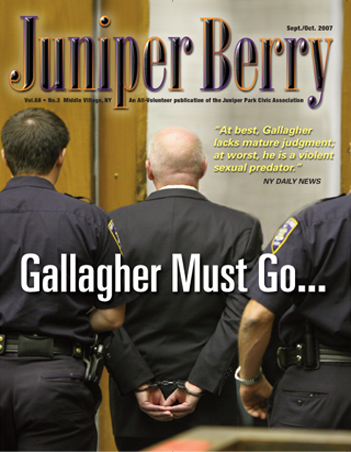Mr. Adrian Benepe, New York City Commissioner of Parks and Recreation recently told a New York Times reporter, David Gonzalez: “Our biggest need is to make a lot of places where kids can play so we can address health risks like obesity”.
Benepe was referring to his and Mayor Bloomberg’s plan to spend a minimum of $150 million to install artificial turf in schoolyards and parks throughout the city. Benepe seems to believe that natural grass no longer serves its purpose for kids to play on. He and other proponents claim that artificial turf is cheaper then grass to maintain. But, there is no proof for that claim.
What studies have been performed to demonstrate that over a span of years, on an acre-for-acre comparison, artificial turf is less costly to install and then maintain than natural grass? When a substantial amount of tax dollars are to be spent on a questionable project, it is the agency manager’s fiduciary obligation to be able to prove that the money is being carefully spent and the results will be beneficial to the taxpayers. It is their money, after all; the commissioner (and the mayor) was simply entrusted with it. The parks also belong to the taxpayers. And, clearly, the health of their children and family is a concern to the taxpayers, but not to Benepe or the mayor.
As a reminder to Parks Commissioner Benepe, he is not the health commissioner, entrusted to address obesity in kids. He is the parks commissioner.
As such, Benepe was informed in September 2006 that the artificial turf was possibly a cancer-causing product. He brushed off a letter (from Dr. Bill Crain, a professor of developmental psychology at CUNY, who, after seeing testing results by Junfeng Zhang, a chemist, at Rutgers, wrote to Benepe requesting permission to conduct additional testing). Benepe refused permission, directing that Crain communicate with Parks’ attorneys for any further such requests. That was in September 2006.
In January 2007, Dr. Crain wrote a second letter to Commissioner Benepe asking that the earlier refusal to cooperate be reconsidered. As of July 2007, Benepe has not replied to Dr. Crain, leaving open the question regarding the safety of the artificial turf.
In the New York Times article, Benepe claims that “while he was not aware of any hazards posed by the turf, he had asked the Department of Health and Mental Hygiene to review the current research on synthetic turf and make recommendations if necessary.”
How can Benepe claim with any honesty that he is unaware of any hazard posed by the turf in view of the letters sent to him by Dr. Crain?
Benepe added that his department was trying to see if changing the color or consistency of the rubber used for the fields would result in lower temperatures, too.
Here’s a recommendation: have a qualified, independent laboratory conduct testing on the artificial turf itself, as Dr. Crain has repeated urged. Why “review current research” when testing the product firsthand would yield far more accurate data?
What explains the rush to spend $150 million tax dollars on a possibly cancer-causing product? If careful, independent testing delays the installation beyond this mayor’s term, but the testing demonstrates the product is safe, then the next mayor can proceed with its installation, if the taxpayers want their money spent that way.
Natural turf has a positive role in our environment. It keeps an area cool, supplies oxygen, soaks up rain, provides a home for many creatures such as birds, insects, worms, and our furry little friends, and is an excellent place for kids to play.
Even if artificial turf proves to be free of cancer-producing contents, what possible reason would we want it in preference to natural grass?
If obesity is truly a concern for Benepe or the mayor, natural grass is a place for kids to play to work off any obesity. It’s a wonder that Benepe failed to know that.
Kids who play in natural turf have an opportunity never to be available while playing on artificial turf: discovery of all the variety of nature. Catching lightning bugs, lady bugs; holding a wriggly worm after a rain; observing the birds feeding on the creatures, and watching the squirrels. None of this occurs on artificial turf.
The artificial turf installed already in many parks contains pellets that are the product of used tire recycling operations. It is these pellets that are possibly cancer-causing. Now, several months ago, China shipped nearly 500,000 faulty tires to the US. These tires had to be recalled. That would make them prime candidates for the tire recycling manufacturers. What were the ingredients of the recalled tires? Will those tires end up in our parks as pellets in artificial turf? Will the pellets from these tires be far more dangerous than the pellets already used?
Where is Benepe’s study of this issue? Can he and the mayor slow down – preferably halt – the installation of any more artificial turf in any park or schoolyard until all health questions are entirely answered?
Perform thorough, independent testing. Do management studies of the comparative cost of installation and maintenance of artificial turf vs. natural turf and consult the owners – the taxpayers – to learn if artificial turf is even wanted.



